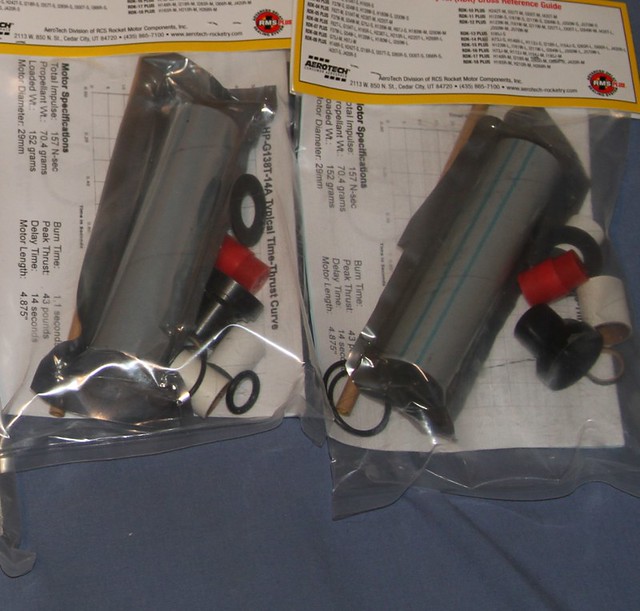Mr G
Well-Known Member
- Joined
- Feb 10, 2013
- Messages
- 510
- Reaction score
- 130
Just drag raced two similar rockets using the Aerotech G138T-14 in the 29/40-120 case with the delay drilled out for 10 seconds. When the cases were being cleaned two significant items of concern were noted as follows.
Here are the parts for each of the motors at time of disassembly. Are there any indications from the internal components that would explain what happened?

Near the top of the Aerotech case there was a discoloration and a raised rough area where the metal appeared to have been effected - is this what some call a "blister?"

The Rouse Tech case had blotchy discoloration along the top of the case and part of the forward closure.

Does anyone have experience with these kinds of anomalies? The inside of the cases were clear with no apparent damage. Has there been structure damage to either case to the point where is should be retired from service?
Here are the parts for each of the motors at time of disassembly. Are there any indications from the internal components that would explain what happened?

Near the top of the Aerotech case there was a discoloration and a raised rough area where the metal appeared to have been effected - is this what some call a "blister?"

The Rouse Tech case had blotchy discoloration along the top of the case and part of the forward closure.

Does anyone have experience with these kinds of anomalies? The inside of the cases were clear with no apparent damage. Has there been structure damage to either case to the point where is should be retired from service?









